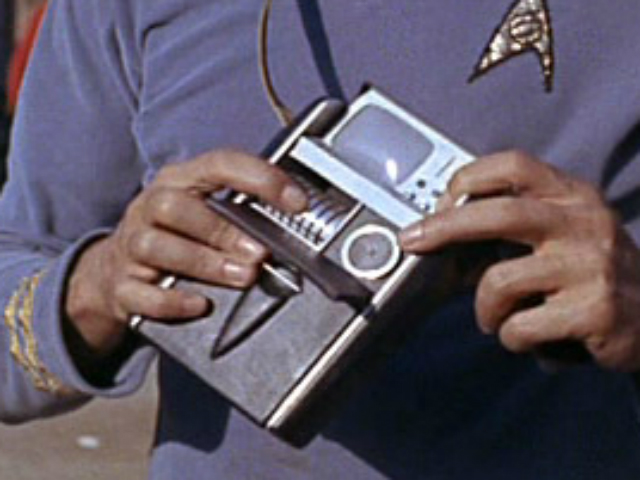Filtered By: Scitech
SciTech
Star Trek hyposprays, healing devices coming soon to a sickbay near you

Credit: Paramount
Hyposprays and other medical devices that can heal injuries quickly on "Star Trek" may be coming to a sickbay near you sooner than you think.
The National Aeronautics and Space Administration has signed two biotechnology patent license deals with GRoK Technologies LLC of Houston for applications on Earth and in space.
"Biotechnology research taking place on the International Space Station and at NASA centers around the country continues to push the leading edge of science. This partnership will further enhance NASA's ability to share the unique breakthroughs made in space-based research," said Yolanda Marshall, director of the Strategic Opportunities and Partnership Development Office at NASA's Johnson Space Center in Houston.
According to NASA, the agreements stemmed from its Technology Transfer Program, which helps open up its research and technology to the public.
Moshe Kushman, GRoK's founder and CEO, added the GRoK team is delighted to be a NASA licensee "with the opportunity to bring forward into the commercial sector technologies that have the capacity to improve the lives of people everywhere."
"It's not just science fiction anymore. All indications are that 21st century life sciences will change dramatically during the next several decades, and GRoK is working to define the forefront of a new scientific wave," Kushman added.
Covered by the agreements are rights for four patented technologies invented by NASA and GRoK scientists.
NASA: Regeneration potentials
NASA is particularly interested in the potential of these technologies for regenerating bone and muscle.
"During long spaceflights, astronauts are susceptible to developing osteopenia, which is a condition arising from the loss of bone and muscle mass and bone density. The patented technologies could help GRoK develop breakthrough products for the research and medical communities and advance our overall understanding of biomedicine," NASA said.

Credit: Paramount
GRoK platform technologies
For its part, GRoK can use these patented methods on two platform technologies it is developing.
The first platform, dubbed BioReplicates, will let users create 3-D human tissue models and safely test cosmetics, drugs and other products.
More importantly, such a setup may reduce the industry's reliance on animal testing.
The second platform, Scionic, could lead to the development of noninvasive medical devices targeting musculoskeletal pain and inflammation in humans and animals.
NASA’s Technology Transfer Program ensures technologies developed for missions in exploration and discovery are available to the public.
In this way, the technology can be maximized to benefit everyone and promote commercial activity, economic growth, and innovation.
Meanwhile, tech site Gizmodo said that with the four patents, "who knows when we are going to see the final results, but it's good to see that we are at least going in this direction." — TJD, GMA News
More Videos
Most Popular



